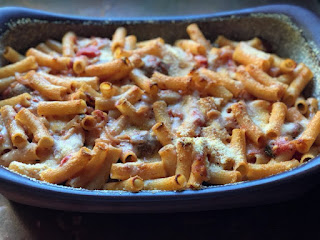A few months ago, I shared a recipe (here) for Ciambella (aka Marbled Breakfast Cake) fromThe River Café Classic Italian Cookbook. Here’s another breakfast worthy cake. This Tunisian Orange Cake recipe comes from an outstanding cookbook, This Is Camino (2015) by Russell Moore and Allison Hopelain with Chris Colin. In addition to its deliciously nutty yet bright taste and perfect moist texture, the cake takes very little time to make (especially if you have breadcrumbs in your pantry and use almond flour as a shortcut).
This Is Camino
Back in 2015, I wrote about This is Camino and shared the cookbook’s recipe for Red Lentils (here). In This is Camino’s introduction, Hopelain describes the restaurant she owned with Moore: “At its heart, Camino is about an approach to food, one that can happen anywhere. Neither Russ nor I are grandmothers, but fundamentally ours is grandmotherly cooking. Specifically, a frugal grandmother who grew up in the Depression, had plenty of style, kept a sweet vegetable garden, and could shake a good cocktail.”
One can’t miss Moore and Hopelain’s resourcefulness when cooking from This is Camino, and the Tunisian Orange Cake recipe is no outlier. Moore writes that he came across the cake recipe in Darina Allen’s Ballymaloe Cookery Book. He calls the Tunisian Orange Cake a “…perfect Camino cake—it uses breadcrumbs (good use of leftovers, plus the added bonus that you can’t overwork the gluten) and the zest AND juice of the citrus, and if you make two cakes, you won’t even have any leftover random half a lemon.”
The recipe makes a 9-inch cake. If you prefer weighing ingredients, I provide a few helpful metric weights that I use when I make this delicious cake.
2/3 cup (135g) olive oil, plus more for the pan
3/4 cup whole almonds
1/2 cup (70g) Breadcrumbs (see page 33), ground fine
1½ teaspoons baking powder
1 cup (200g) and 1/3 cup sugar (67g)
4 large eggs
1 orange, zest and juice
1/2 lemon, zest and juice
2 whole cloves
1 cinnamon stick
Plain yogurt, for serving
Dates, for serving
Preheat the oven to 350°F. Line the bottom of a 9-inch round cake pan with parchment paper, then brush the parchment and sides of the pan with olive oil.
Spread the almonds on a baking sheet and toast them in the oven until they are a shade darker, about 8 minutes. Set aside to cool for a few minutes. Grind in a food processor until fine.
Sort through the breadcrumbs and pick out any particularly big pieces. Mix together the crumbs, ground almonds, baking powder, and 1 cup of the sugar.
In another bowl, whisk together the eggs, olive oil, and the zest of the orange and lemon. Pour the egg mixture into the breadcrumb mixture and stir, then scrape the batter into the cake pan. Bake for 40 minutes, until evenly brown and set. Remove from the oven and let the cake cool in the pan for at least 30 minutes.
Meanwhile, make a citrus syrup by combining the cloves, cinnamon, juice of the zested orange and lemon and remaining 1/3 cup sugar in a small pot. Cook over medium heat until the sugar dissolves and the syrup thickens, about 3 minutes.
When the cake is cool, remove it from the pan and poke a bunch of holes through the top of the cake with a skewer. Drizzle about half of the citrus syrup over the cake—this will help it keep for a few days. Serve each slice of cake with dates, a spoonful of yogurt, and a drizzle of the syrup. It’s also good with any stone fruit or citrus segments.
If you don’t finish it all, it is best to store it at room temperature covered in foil, not plastic.
Breadcrumbs
Now, what about those Breadcrumbs on page 33? Again, pure Camino:
“I’d rather you didn’t make any of the recipes in this book that require breadcrumbs if it means you are going to buy fresh bread just for that one recipe. Please make breadcrumbs with leftover bread!
Cut up whatever ends or slices you have, put them on a baking sheet, and dry them out in your oven heated just by the pilot light. Depending on the ferocity of your pilot light, the bread should be rock hard after a day or two. Grind it in a food processor and store the crumbs in one of the many empty yogurt containers you have lying around. Don’t refrigerate. If somehow you don’t use them, and the crumbs begin to get moldy, throw them out—you gave it a good shot!
P.S. Use any kind of bread that you have.”
(One day I plan on making semolina bread just to use in this cake.)
Here’s the easy shortcut I mentioned, above: use 107 grams of almond flour instead of roasting and grinding the whole almonds. I use Bob’s Red Mill Super-Fine Almond Flour and like the results.
All good things must come to an end, and after running Camino in Oakland for 10 years, Russ and Allison decided in 2018 to retire their successful restaurant. The silver lining is that one of Camino’s Monday Night special menu items, kebabs, became the star of Allison and Russ’s new restaurant, The Kebabery. I understand that The Kebabery is moving from its original Market Street location to 2929 Shattuck in Berkeley, California. Check it out! In the meantime, I hope you enjoy a slice of Tunisian Orange Cake for dessert or breakfast.







